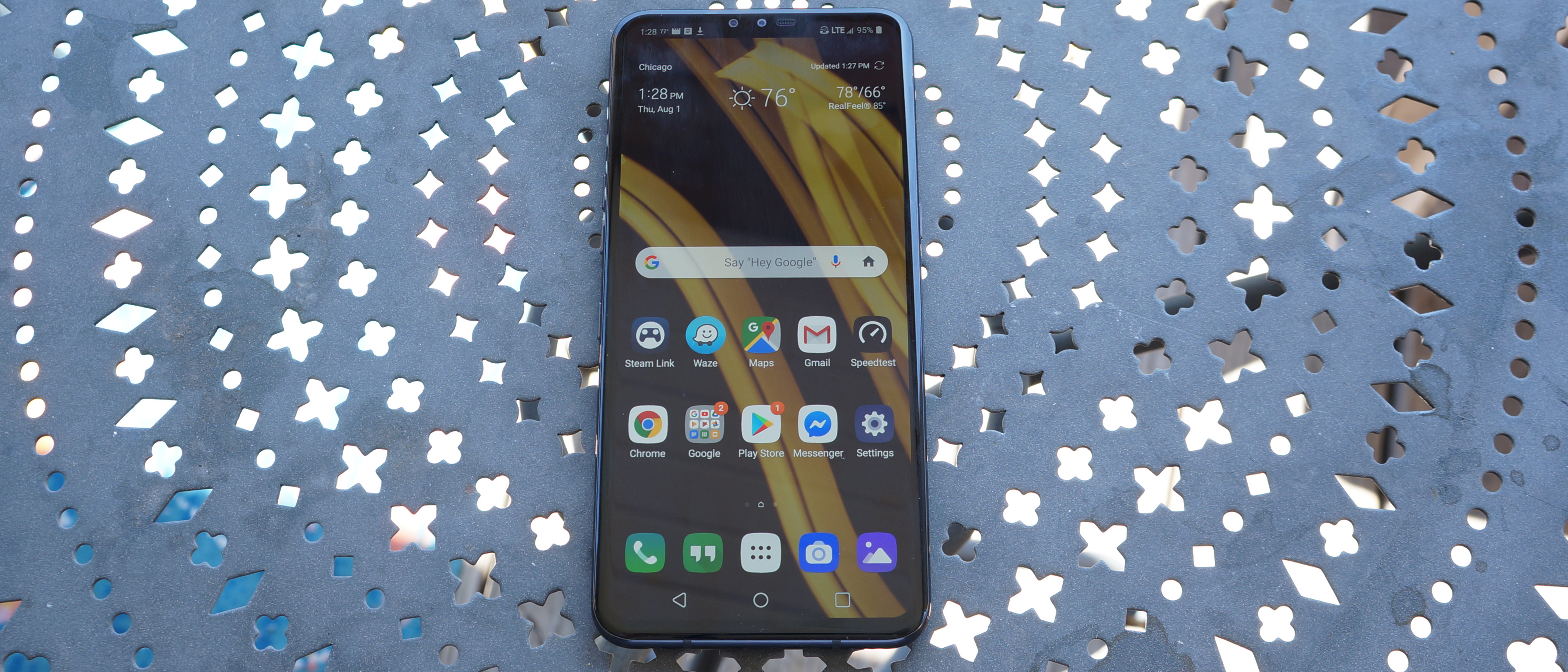TechRadar Verdict
The LG V50 is solid, but smartphone design has left it behind. It’s priced like it’s still top of the line, but it has too much competition from all sides.
Pros
- +
Bright, sharp display
- +
Early 5G support
- +
Camera variety
Cons
- -
Unwieldy
- -
Grating speaker
- -
Dated design
- -
Unjustified price
Why you can trust TechRadar
2-Minute Review
The LG V50 ThinQ is LG’s foray into the 5G ecosystem. It takes the LG V40 and effectively converts it into a more powerful, 5G-capable device - but leaves much about last year’s phone unchanged.
Inside, its specs are powerful enough with a Snapdragon 855 chipset paired with 6GB of RAM, and it runs Android 9.0 Pie out of the box. Fit with 128GB of storage and a microSD slot that can add another 2TB, it has decent room for apps, videos, photos, and music.
Those internals pair with a large, all-glass and metal design that looks chic and modern until the screen lights up. That’s when its slightly dated aesthetics appear. It has a large notch at the top of the display, and distinct bezels on all sides. The screen is bright, sharp, and massive, though.
Flipping the phone over, the three rear cameras are neatly tucked under the rear glass with no camera bump. The cameras are versatile and can take some great shots, especially for close-ups with the telephoto lens, but they aren’t challenging Huawei or Google for the phone photography throne.
At $999 (about £820, AU$1,445), it’s an expensive phone, though that price sits in the middle of the pack for recent flagships. Some competitors, like the iPhone XS or Galaxy S10 Plus don’t have that 5G connectivity to offer, but the latter at least offers a more modern design.
All in all, the LG V50 is in a tough spot. For those that don’t mind paying for an expensive device if it gets them early access to 5G, the Galaxy S10 5G is the superior choice. For those that are on the fence about jumping to 5G, we’d definitely suggest waiting for the infrastructure to grow and mobile device support for different 5G technologies to get sorted out.
In the meantime, there are still non-5G flagship phones that can offer a similar experience in terms of quality and performance with a lower pricetag and better designs.
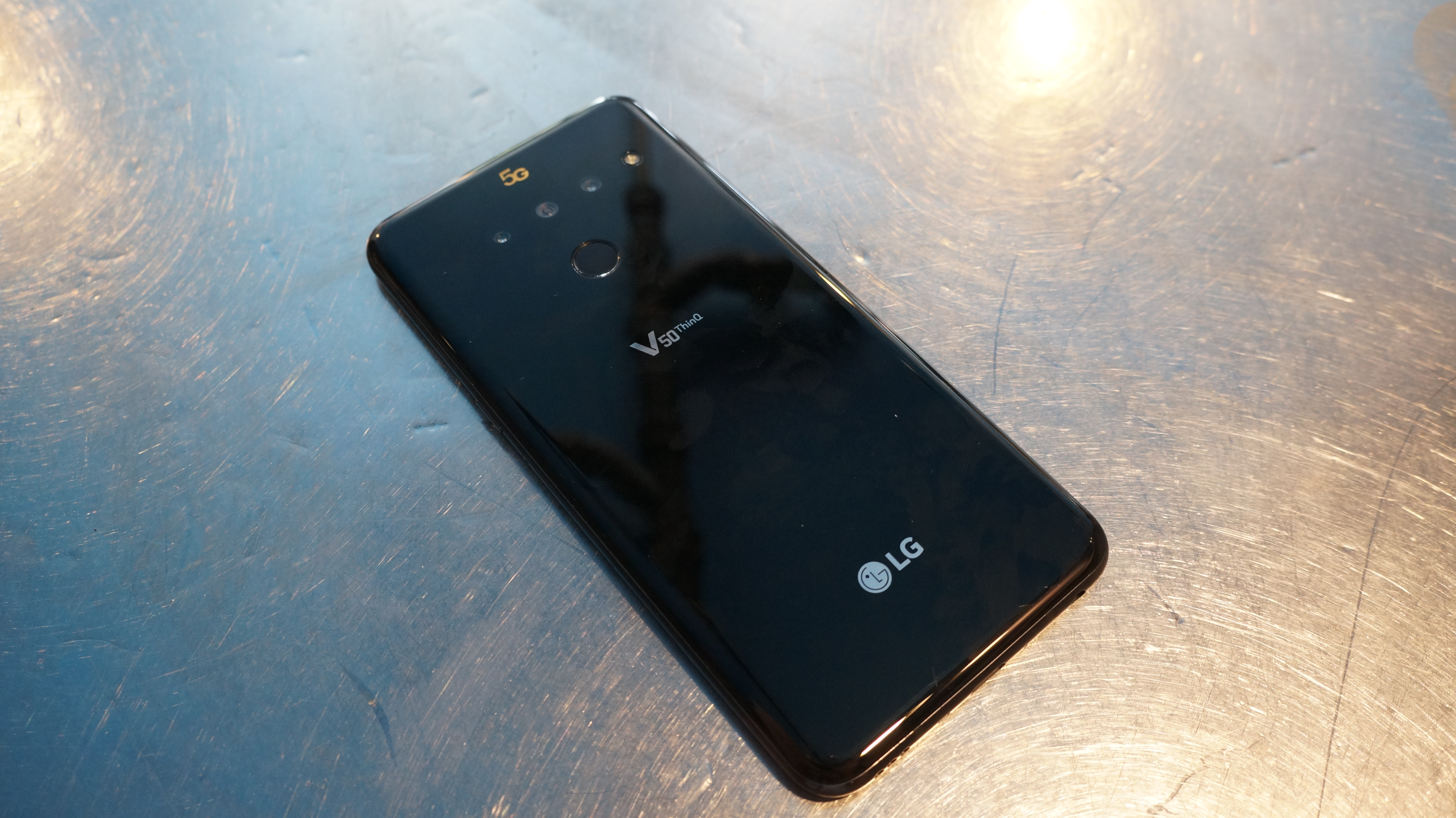
Price Analysis
- Available now
- 128GB + 6GB RAM: $999 (about £820, AU$1,445)
- Limited carriers
The LG V50 launched on May 31, 2019, but it’s not available to just anyone - due mostly to its 5G support. Not all carriers have launched 5G networks, and the LG V50 is only available to those that have. Sure, you may eventually be able to pick up an unlocked LG V50 anyway, but you won’t get much benefit unless you also happen to live in one of the areas where those carriers provide 5G coverage.
In the US, the LG V50 is only available from Sprint and Verizon, though in both cases, that coverage area is far from nationwide. In the UK, it’s an EE exclusive. While the phone does support non-5G connections, there’s a large premium attached to 5G service, and little reason to purchase if you can’t take advantage of that.
The price is troubling also because of just what LG actually offers. At $999, 128GB of storage and 6GB of RAM begin to feel a bit light when the OnePlus 7 Pro offers 256GB and 8GB of RAM for $699 (£699). Even the Samsung Galaxy S10 has made the jump to starting with 8GB of RAM.
Sure, the LG V50 is a 5G phone, but it’s also a flagship. Yet, it seems like LG has forgotten that RAM is part of the flagship equation, just as chipset, display, design and every other detail are.
It does come in cheaper than the $1,299 (£1099, around AU$1,850) Samsung Galaxy S10 5G, though. But that phone comes with double the storage, 2GB of extra RAM, a more modern design, and an extra rear camera.
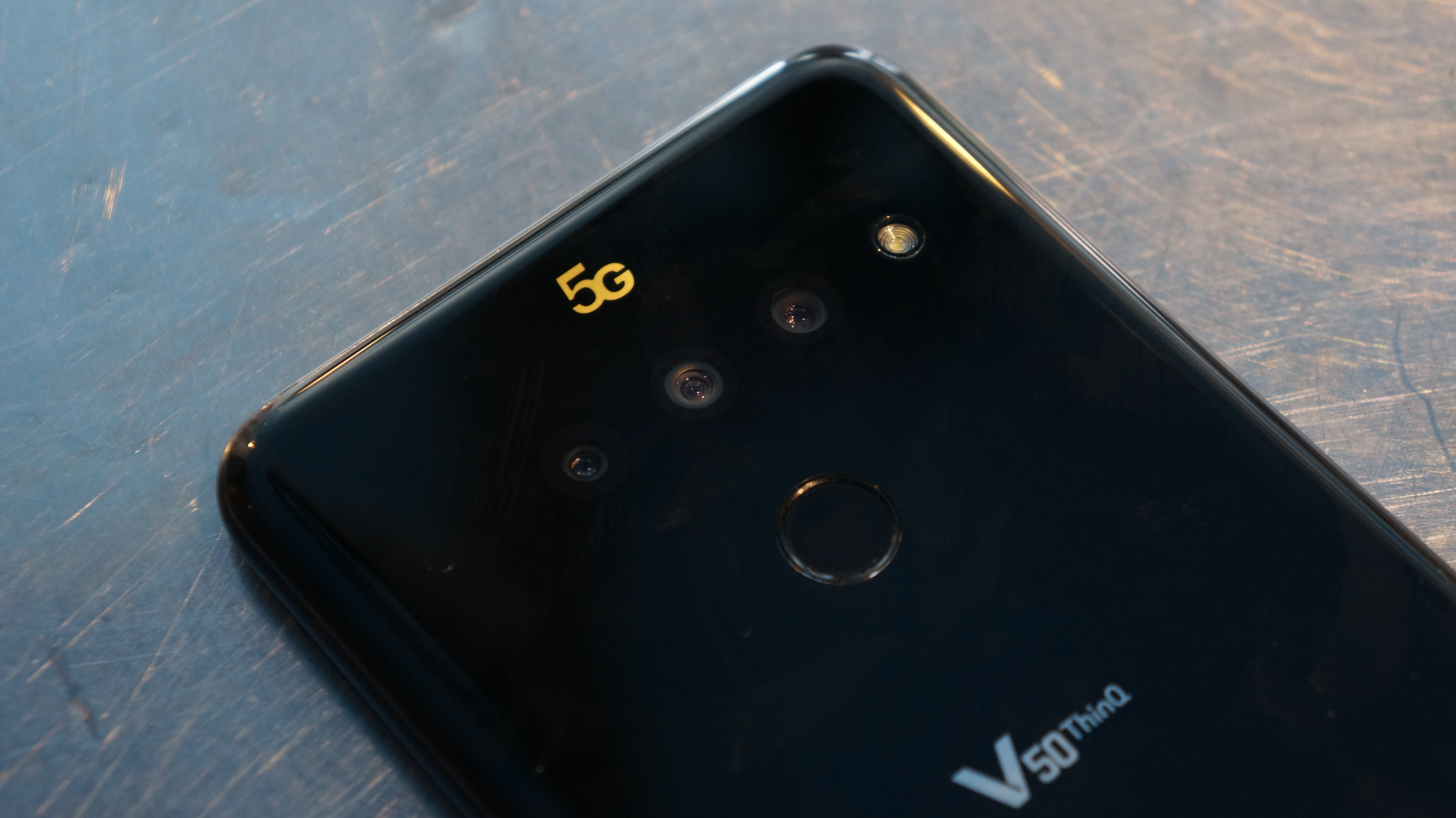
5G
- Up to 308Mbps in our testing
- Indoor 5G connectivity (with Sprint, at least)
For anyone that wants to be on the forefront of mobile technology, 5G is the next big thing, and the LG V50 is one of the few devices that can get you connected. 5G offers lower latency and higher bandwidth, meaning the LG V50 should be able to download files and content faster. Sure enough, it can.
We put the LG V50 through a number of 5G speed tests on Sprint’s 5G network - specifically, in Chicago.
Here’s what we tested:
- 1.7GB work file in 1m35s - 17.8MB/s
- Stranger Things Season 3: 2.1GB in 7m15s - 4.8MB/s (noticed some stalls between episodes)
- Spider-Man: Into the Spider-Verse: 405MB in 1m07s - 6MB/s
- PUBG Mobile: 2.04GB in 2m20s - 14.6MB/s
- The Marvelous Mrs. Maisel S2E1 (Best Quality): 353MB in 0m22s - 16MB/s
- The Marvelous Mrs. Maisel Season 2 (Best Quality): 2.7GB in 3m15s = 13.8MB/s
While the results are not as insane as we saw in our 5G speed test using the Galaxy S10 5G on Verizon’s 5G mmWave connection, we also didn’t have to stand outside in direct line-of-sight from the 5G tower. We actually conducted all of these tests indoors, away from a window, where we still managed a stable 5G connection. Better still, after we ran all of these tests (virtually back to back), the LG V50 only got a bit warm, and never reached absurdly hot levels.
We also ran a number of simple network speed tests throughout our testing. Generally we saw speeds between 100Mbps and 200Mbps, but we did see some higher scores. One test hit 279Mbps, and our highest reached 308Mbps. That top score was also conducted indoors.
An important thing to note here is 5G network compatibility. Though the LG V50 is available for different 5G networks, you may not be able to take it from one carrier to another. We were told that the LG V50 we’ve tested on Sprint’s 2.5GHz band doesn’t support Verizon’s mmWave network.
This is somewhat troubling as the future of 5G should leverage many different bits of spectrum, and at this price, we’d want the phone to be better prepared for the future. For example, Sprint and T-Mobile are set to merge in the US, and while that should mean a bigger 5G network, it doesn’t guarantee that the LG V50 for the Sprint network would actually be able to connect to any of the T-Mobile infrastructure.
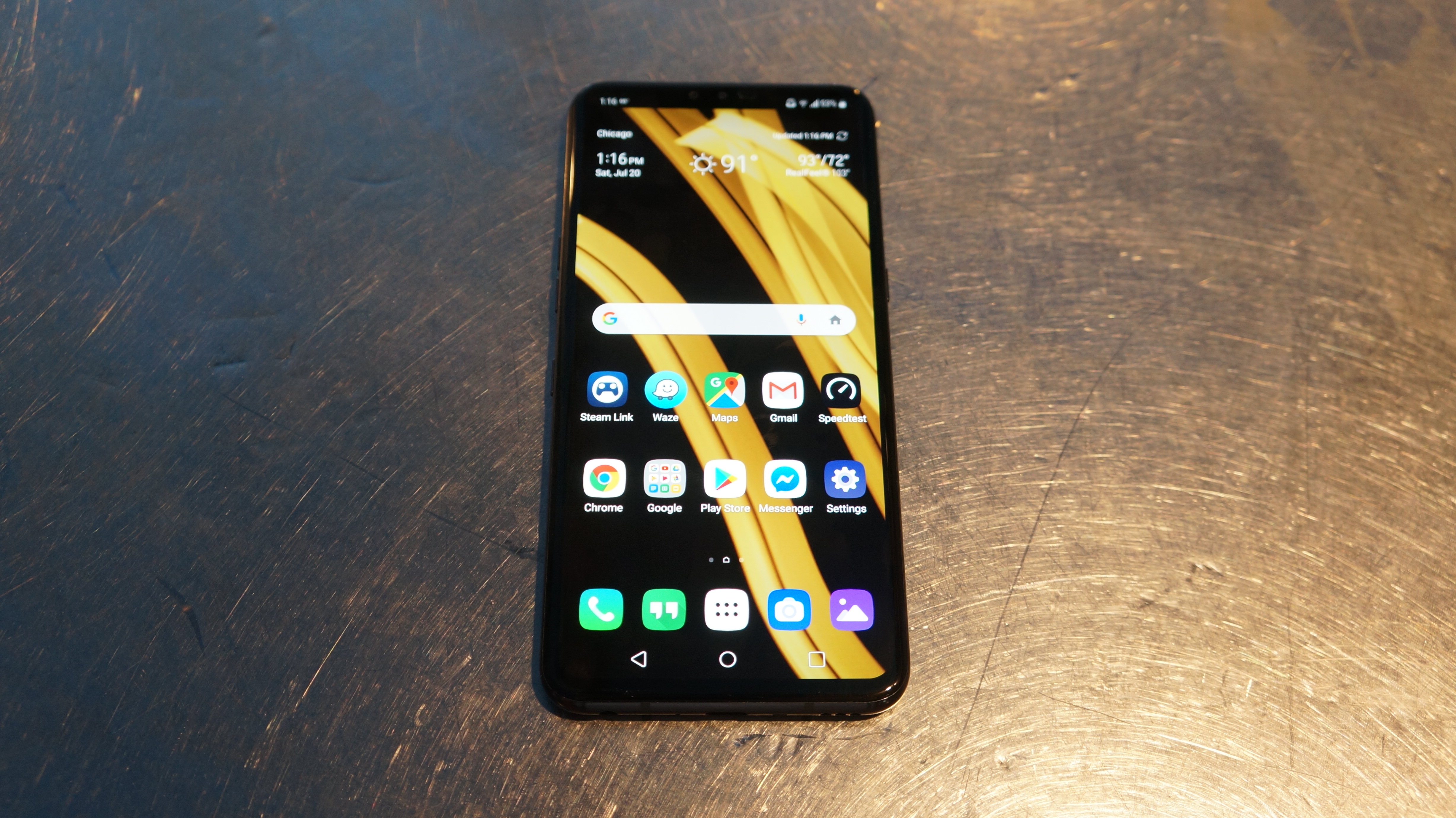
Display
- Big, bright, and stunning
- A big notch and bezels are very 2017
The LG V50 boasts a 6.4-inch OLED display with a QuadHD+ (3120x1440) resolution for 538ppi. It has a 19.5:9 aspect ratio and 84.3% screen-to-body ratio. Though LG calls it a “FullVision” display, the bezels are still pretty eye-catching.
The look of the display is decidedly outdated with the likes of Samsung’s hole-punch cameras, OnePlus’s full coverage, and other designs that shrink the notch and bezels further.
As intrusive as the notch can seem, there are some options to hide it. Unfortunately, you can only do that some of the time. We set it to be mostly hidden by making the notification bar black. But, as soon as we open up an app, it takes over the color scheme. Hangouts made the notification bars green, and then, BOOM, there’s the notch back in all its un-glory.
The corners of the display are also rounded, which often cuts off the corners of videos or forces us to shrink the video and not benefit from the full screen real estate
There are good points for the display, though. For one, that resolution is wonderfully sharp. The phone defaults to run at a lower resolution, and we never feel the need to turn it up. It’s also plenty bright for sunny days thanks to its boosted brightness setting. We never struggled to see what’s on the screen.
We watched a good chunk of Spider-Man: Into the Spider-Verse to see how well the LG V50 handled vibrant colors, and it didn’t let us down. LG’s display technology is predictably beautiful. We also watched Cosmo’s Laundromat with the HDR effect enabled (we see no mention of an actual HDR standard supported, like HDR10), and it was stunning.
But some of that credit may simply go the video itself and the capabilities of OLED panels. We ran the video side-by-side on a OnePlus 5 (which couldn’t even play it in Full HD on Netflix), and it looked just about as good thanks to the contrast ratio OLEDs can deliver.
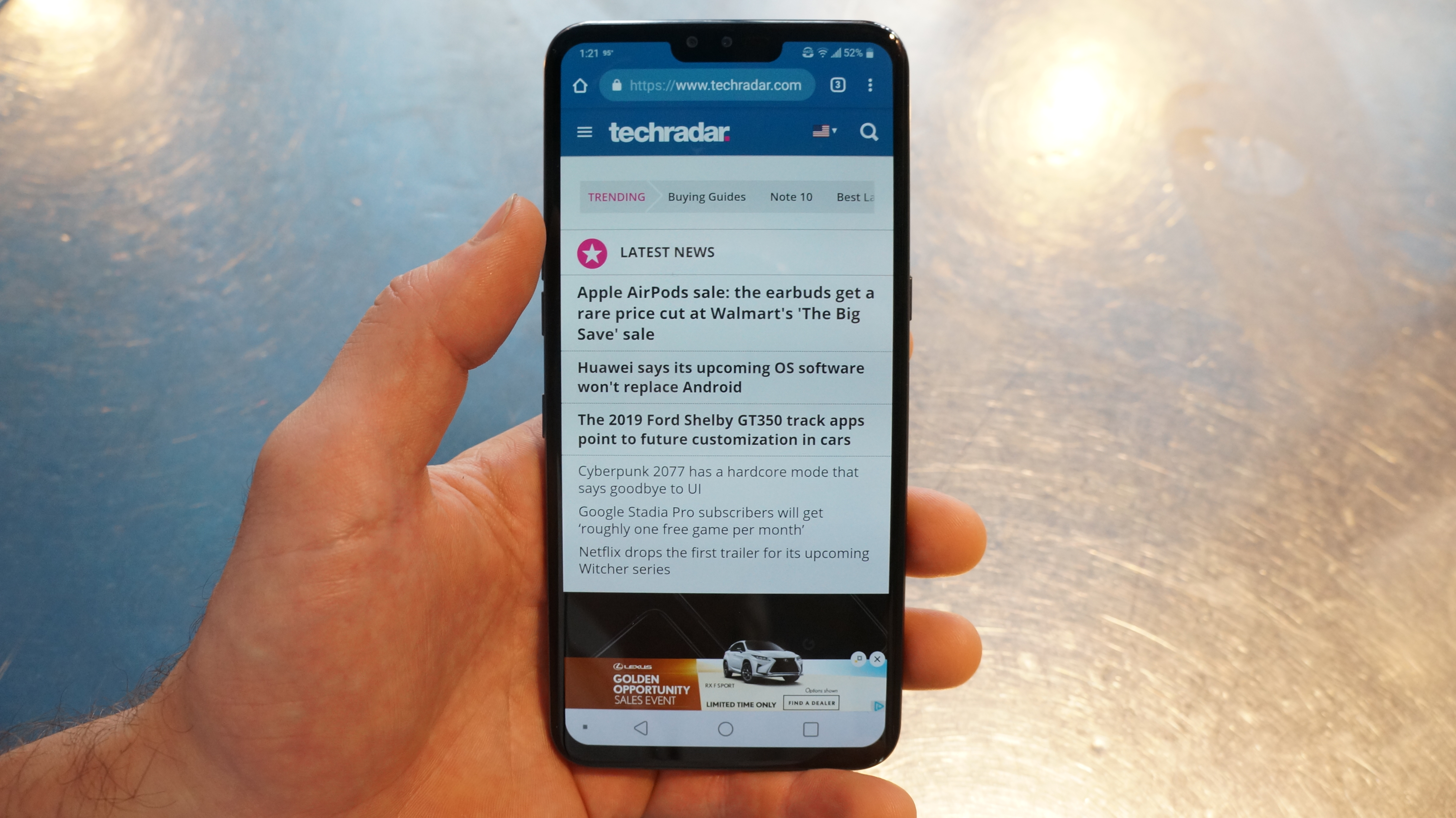
Design
- Sleek, but maybe too sleek
- Cameras neatly nestled under glass
- Oh, hey, headphone jack
The LG V50 is a testament to how LG seems to be falling behind the pack. There is very little changed from the LG V40, with the display and body nearly identical save for the extra 0.5mm in thickness for the LG V50. It measures 158.8 x 75.7 x 8.4mm (6.25 x 2.98 x 0.33 inches) and weighs 183 grams.
The newer phone keeps a power button on the right side while the volume buttons and Google Assistant button stay on the left. There’s a wide SIM tray on the right that also has a slot for a microSD card.
The phone edge is metal, while the front and back are covered in glass. It’s Gorilla Glass 5 on front, and Gorilla Glass 6 on the rear. One change from the LG V40 is that the rear cameras are now fully embedded underneath the rear glass, with no protruding camera bump. The back is thereby a smooth sheet of glass with rounded edges and only the recessed fingerprint scanner and flash interrupting it. At the top, above the cameras, there’s a light-up 5G logo that pulses, but it does so regardless of any 5G connection.
All that smoothness isn’t necessarily a win in our books. While it lends the phone an aesthetic plus, it makes the handset much harder to hold. We had it slip right out of our fingers several times on a beach day from lightly sunscreen-greased hands. More than once it has slid out of our pocket as well. We even set it on a table and watched it slowly slide off the edge. And, because the phone is so big, the slick design makes a hard-to-hold phone that much more of a challenge.
That’s where the MIL-STD-810G specification comes in. It should prove fairly durable to some minor mishaps, and sure enough, we haven’t seen the few we’ve encountered damage the phone. It also has an IP68 rating, so a bit of water isn’t a problem.
The LG V50 has a USB-C port on the bottom, and continues to carry the torch for the 3.5mm headphone jack. It even steps up its potential with a 32-bit Hi-Fi Quad DAC and support for DTS:X 3D Surround. The result is an impressive listening experience not matched by Bluetooth, even with AptX.
The speaker grille is also on the bottom, while an extra-small earpiece is nestled in the notch above the display. That audio experience, honestly, isn’t that good. While LG calls the setup “Boombox Speakers,” they’re not all that loud, and when cranked to max volume, they’re grating and unclear. The earpiece’s speaker tries to add in some sound, but it’s basically useless.
For taking calls, the earpiece is also troublesome. Because it’s so small and off center, it’s easily positioned wrong over our ear.
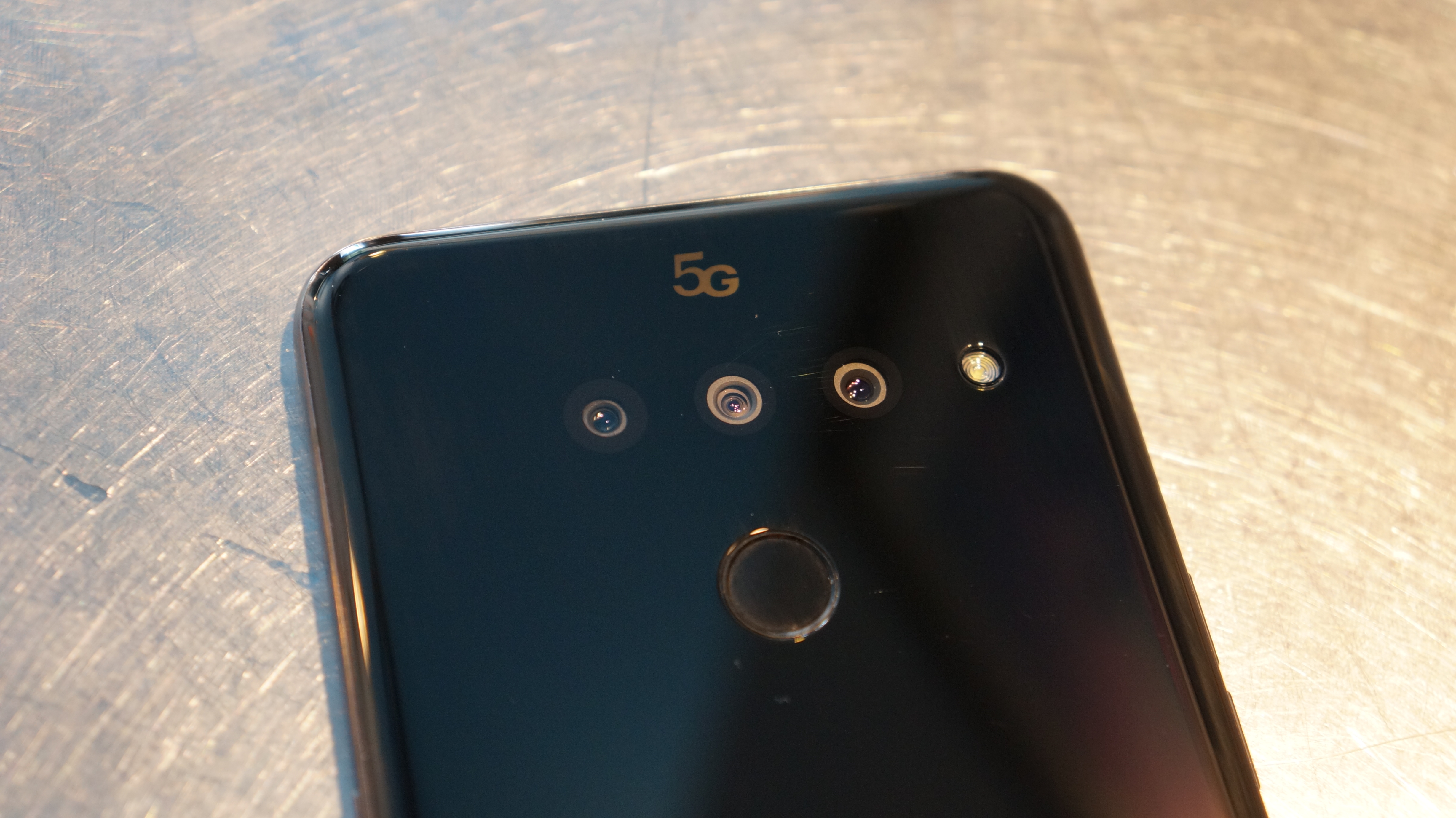
Five cameras
- Five versatile cameras
- Mind-boggling settings
Just like the design, the LG V50’s camera system isn’t largely different from the previous model’s. There’s an 8MP camera and 5MP wide-angle camera on the front, as well as a 12MP telephoto, 16MP super-wide, and 12MP standard camera on the rear.
That’s a total of five cameras, and they give it a decent amount of versatility in shooting photos. But, it’s not the only phone with so many cameras anymore, as Huawei’s P30 Pro and the Samsung Galaxy S10 5G put up some stiff competition.
The main rear sensor supports some of the LG V50’s key features. It’s a 10-bit HDR sensor, and it allows the phone to capture 4K video in HDR10. While 4K/60fps is possible, some features are limited to 4K/30fps and below (24fps is also an option for a cinema feel). The main sensor also has OIS and EIS, something the others lack.
All told, the LG V50’s camera offering is impressive. The imagery we capture is generally super sharp (sometimes too sharp, making brightly lit hairs and other thin objects appear almost like neon lights, and giving blurred backgrounds a Van Gogh-like effect), and vibrant. Colors in the pictures pop when they should pop, while the more natural tones of plants and flowers (even colorful ones) stay reasonable.
And, with the ability to switch between ultra-wide and telephoto on the rear, we can capture a nice variety of shots. The telephoto camera offered some excellent close-up quality with a strong background blur that proved more impactful than any software-enabled bokeh effect. And, the 2x optical zoom boosted to 10x with digital zoom may not have been pretty with the added grain and noise, but it was usable.



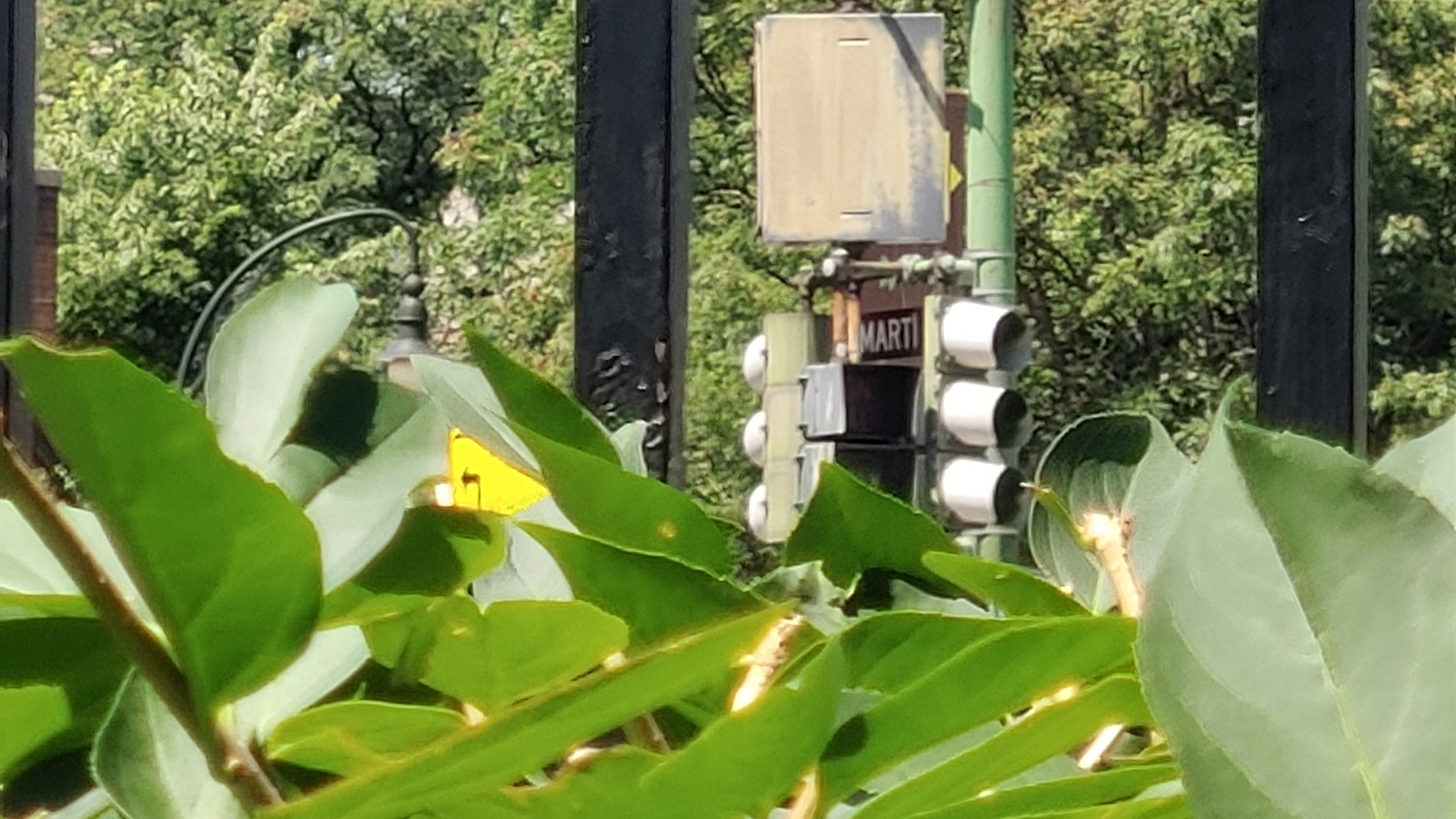
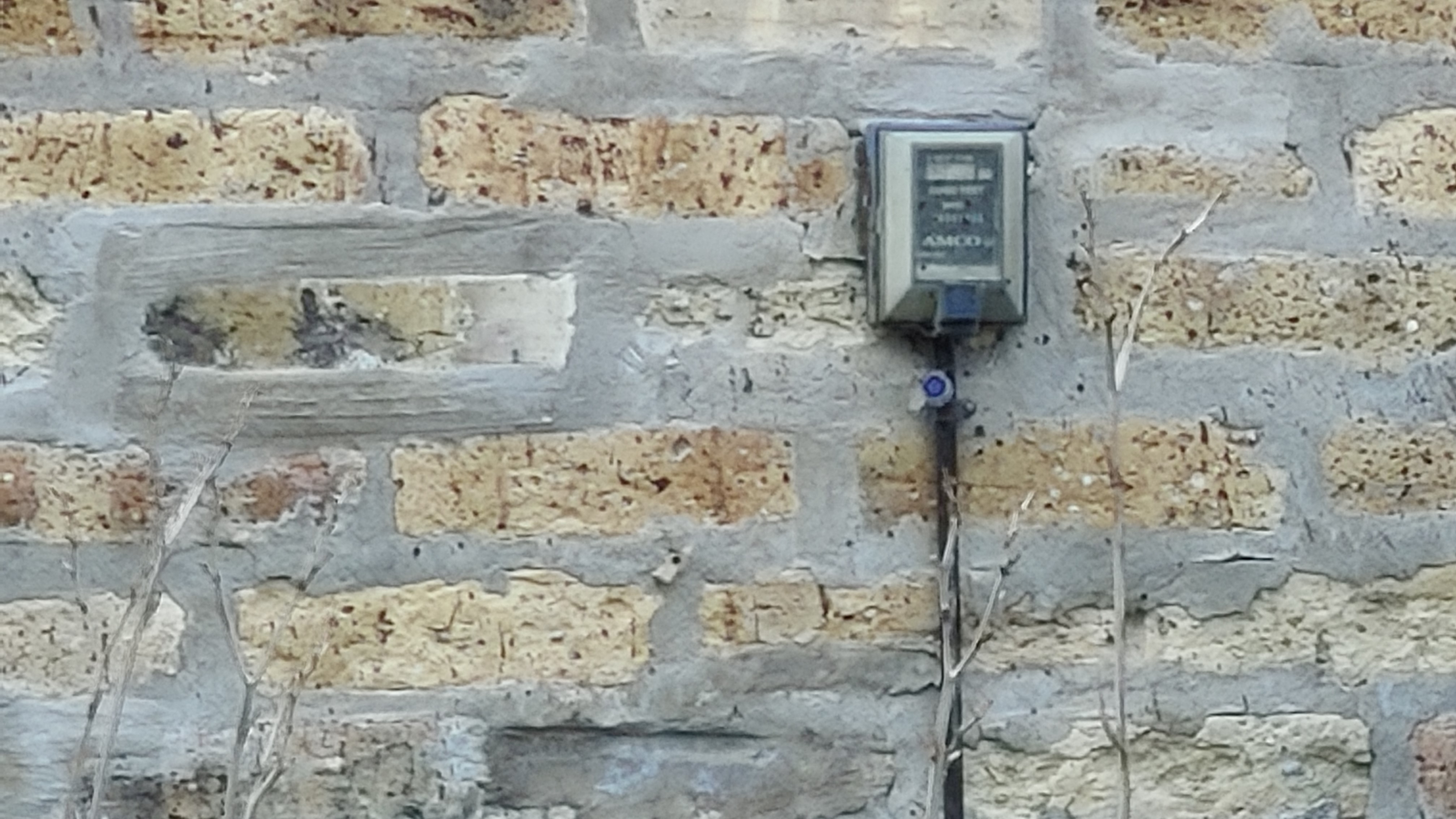
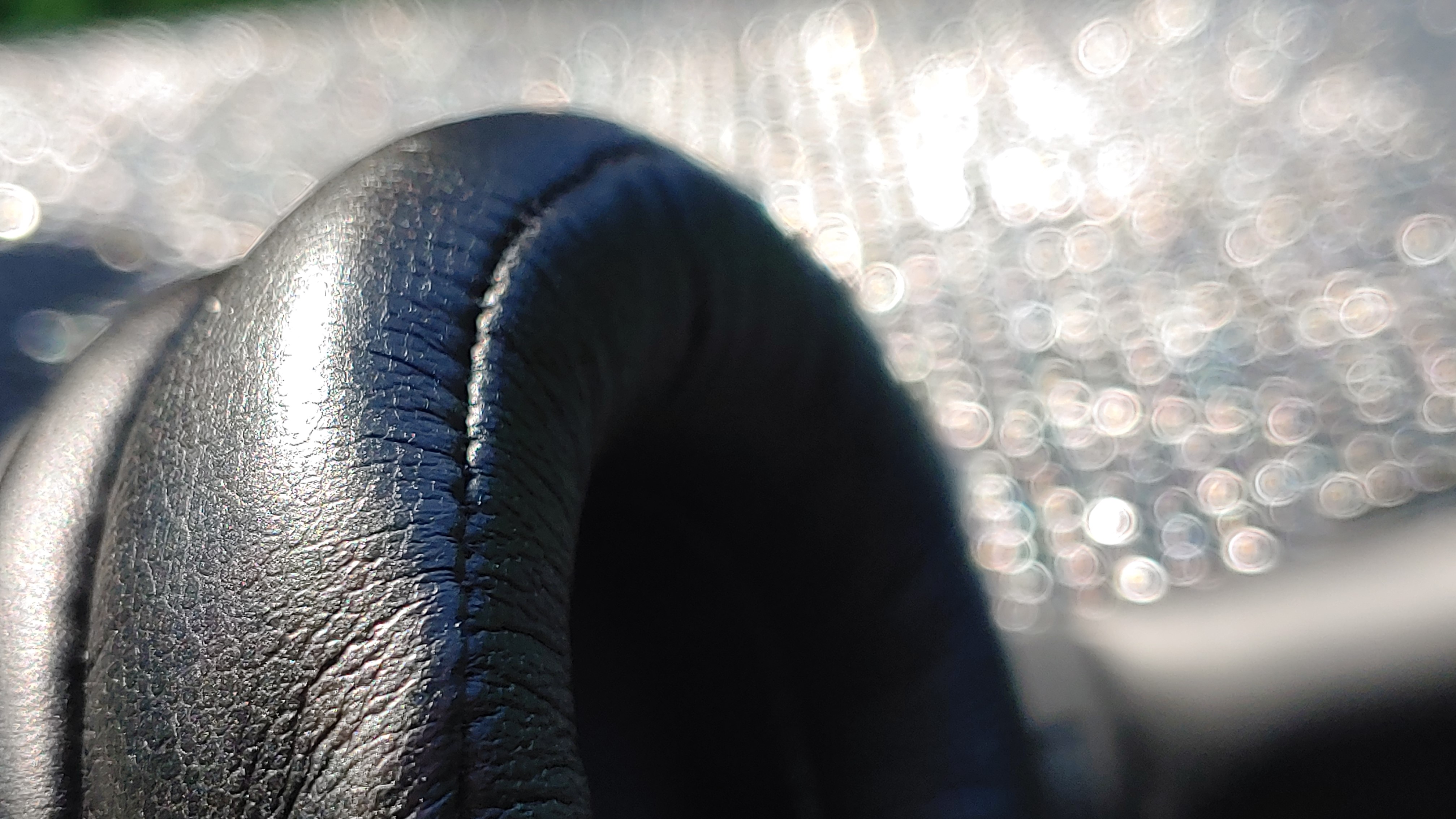





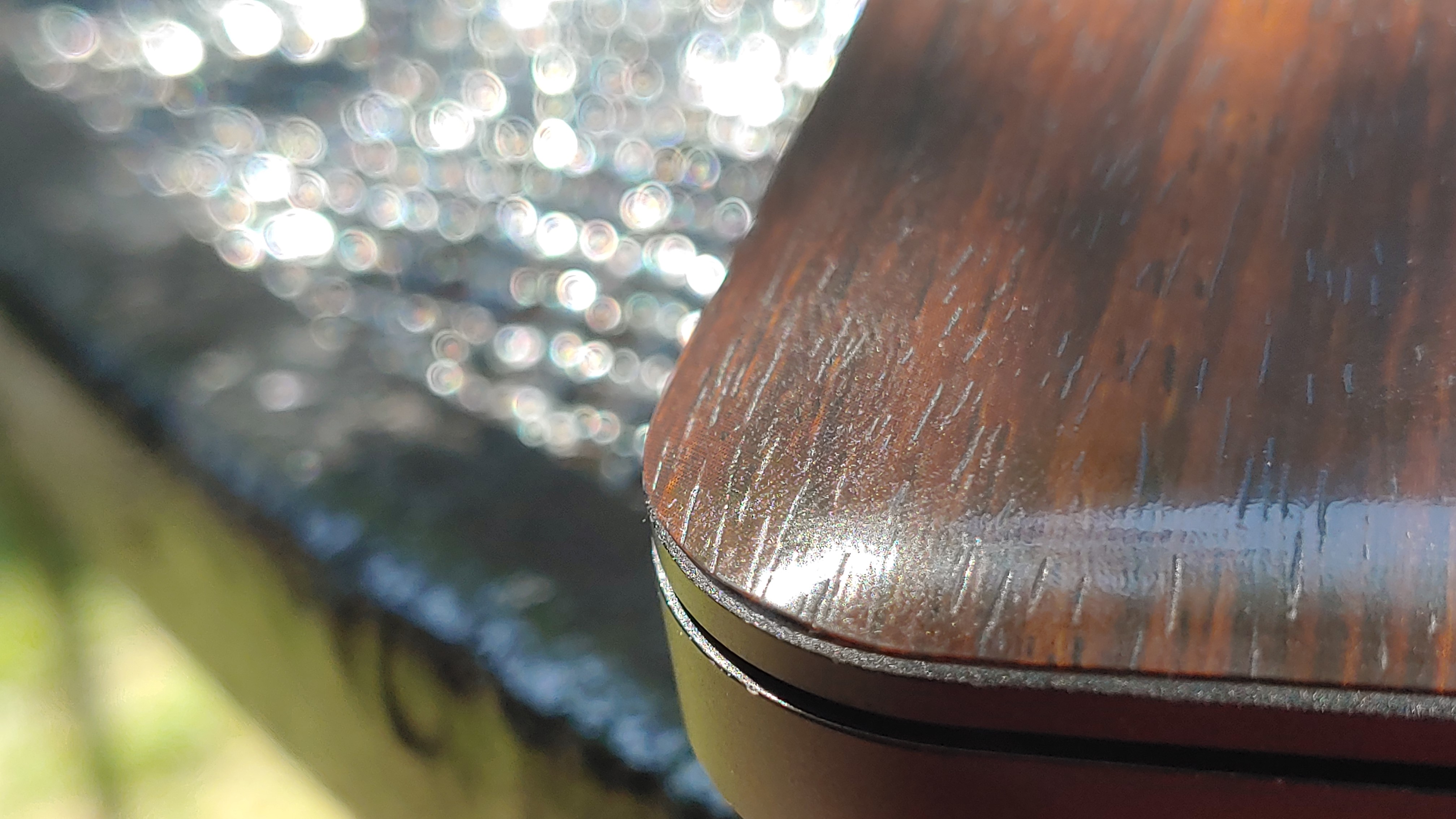





There’s no shortage of special software tricks built in either. Some useful (240fps slo-mo), some less so (Pentashot). LG has all sorts of video tools and filters, AR Emoji, can snap photos prompted by gestures or faces, can record video with portrait mode, and has in-depth manual controls.
The phone also has a Super Bright Camera mode, though it didn’t drastically improve dark shots in our experience. The biggest problem here is that all the settings and tools are in different, not always obvious places within the camera app.
For instance, we thought enabling HDR mode from the default camera screen might enable HDR10 video, but that’s actually tucked away in the settings screen for Manual Video mode. There’s no single unified settings screen that lets you tweak everything. And, with five lenses, there’s no shortage of settings that need tweaking.
Worse still, switching between camera modes is somewhat slow, because we have to swipe through several modes multiple times, waiting for the mode to switch, before we can reach a list of all the modes. And, if we actually switch from front to rear cameras (a simple swipe on the screen), it’ll revert to the Auto mode. If that all sounds too complicated to understand, that’s because it is too complicated.
If you’re less concerned about photos and want to play more with augmented reality, then LG’s My Avatar is AR Emoji are available. My Avatar uses your face to create a 3D character that looks pretty ghastly in our experience, and it handles facial hair poorly (it looked like we had taped on some loose hairs above one side of our top lip) and doesn’t understand what a bald head is. AR Emoji let you use the camera’s facial recognition to control the expression of 3D emoji, but the results are underwhelming.
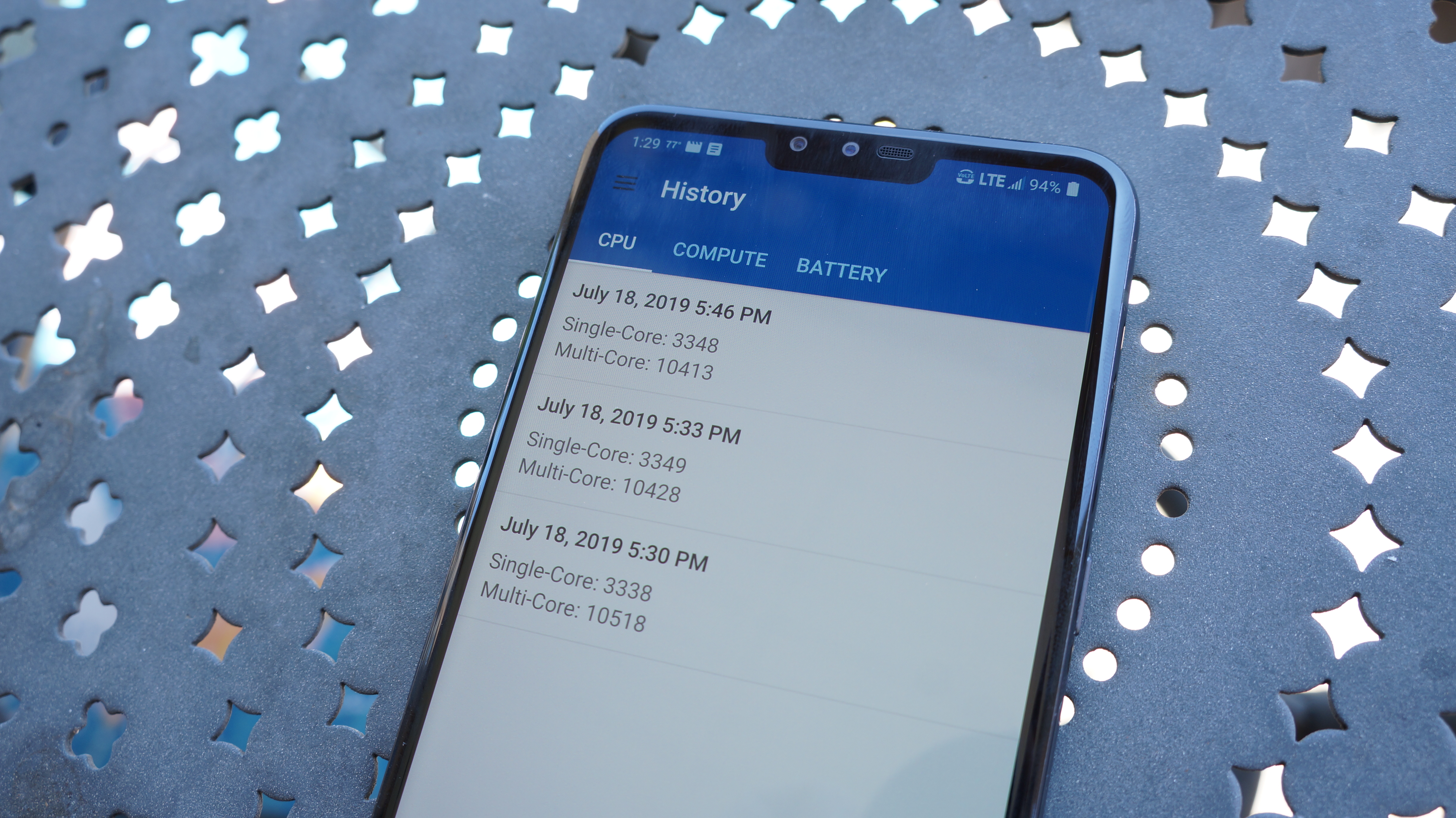
Performance
- High-end, but below the competition
- All-around snappy
The Snapdragon 855 chipset inside the LG V50 gives it plenty of speed to work with. In Geekbench 4, it scored an average single-core score of 3,345 and a multi-core score of 10,453 - a respectable result shy of the OnePlus 7 Pro’s 10,960 and Samsung Galaxy S10 Plus’s 11,002 . The 6GB of RAM may be a limiting factor when getting into heavy multi-tasking, but for most tasks, the LG V50 is going to readily cruise.
While its benchmark scores are slightly lower than what we’ve seen from Samsung’s flagship Galaxy S10 5G, the leading 5G handset we've seen, the real-world performance difference won’t be easy to notice.
LG has a vapor chamber system for cooling LG V50, and we never feel the phone get any more than warm even with significant use. So, it seems to be doing its job effectively.
The availability of microSD storage offers some nice flexibility for optimizing speeds. It means apps and files that need the faster data speeds can reside on internal storage while photos and music can all go onto a microSD.
The fingerprint scanner on the back of the phone is quick and effective. We often catch it with just an edge of our finger, but it still reads that and unlocks. Facial recognition is a little bit slower, taking about one second. But, it’s faster than taking a glove off or cleaning a finger in the middle of a meal.
For wireless connectivity, Bluetooth 5.0 should add a decent level of future readiness. But, the LG V50 sticks with 802.11ac wireless for Wi-Fi. Wi-Fi 6 is the next step in the connection standard, and it’s disappointing to miss it when Samsung has included it on its 2019 flagships.
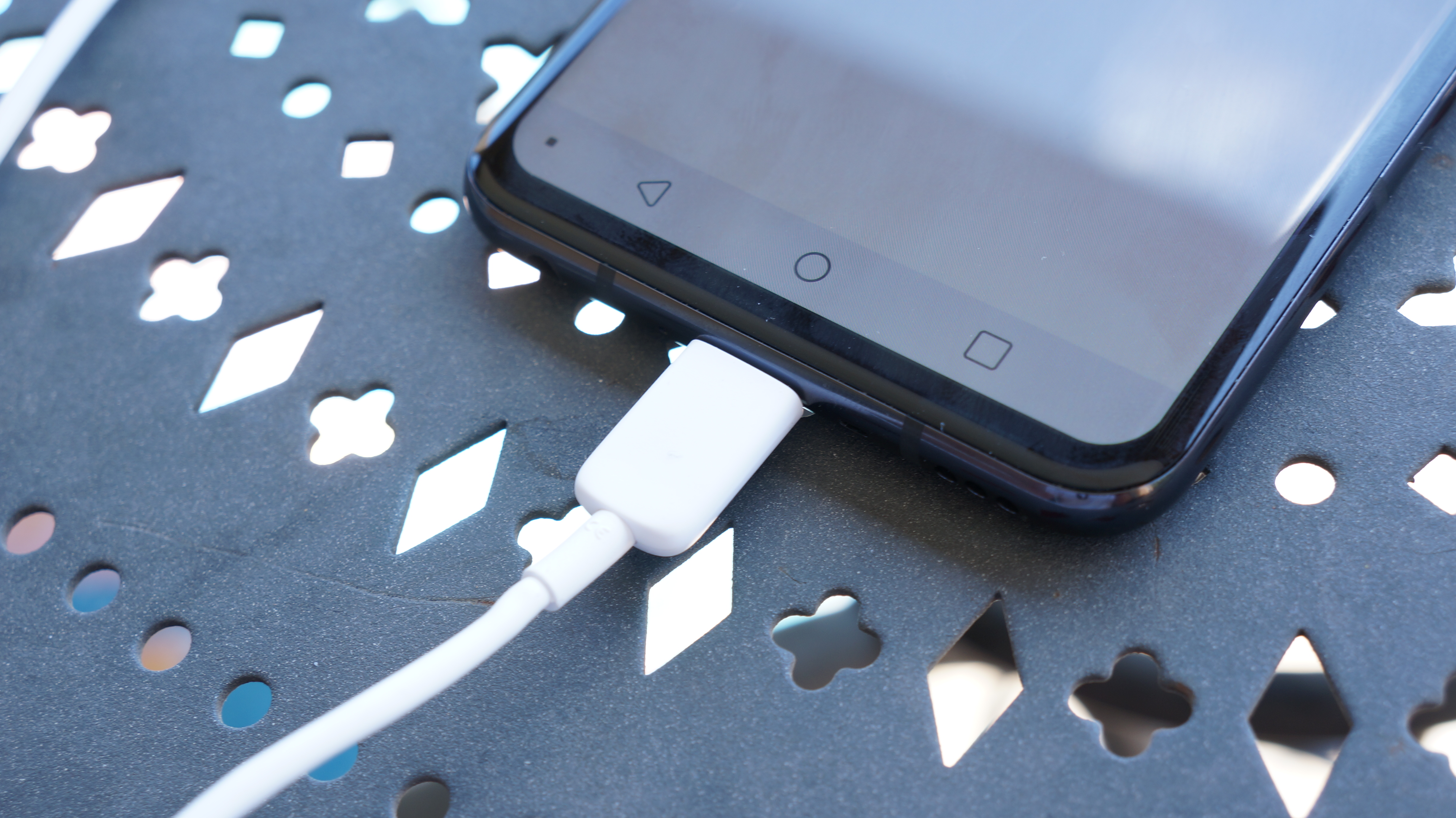
Battery
- All-day, 4,000mAh
- Quick Charge 3.0: 30% charge in 20 minutes, 85% in 70 minutes
There’s little to get surprised about when it comes to the battery. LG has done nothing special here. The LG V50 does get a healthy upgrade from the LG V40, now packing in a 4,000mAh battery.
That’s been plenty to make it through a full day in our experience. With the screen kept at its default resolution and brightness left on auto, we don’t see the battery draining too quickly. Even with video playing, it holds up well.
In our 90 minutes video playback test, we ran a fullscreen video with the display set to its max normal brightness (since the LG V50 has a boosted brightness available), and the battery had only sank to 93% by the end of the video. While in standby, the phone also just sips battery, losing only a few percentage points overnight.
We also noticed that using 5G doesn’t have a serious impact on the battery. When we conducted our speed tests, downloading several gigabytes of content, we didn’t see any major drops in battery life.
That’s all good, but none too surprising. There’s no fancy charging here either. Qualcomm’s Quick Charge 3.0 is here to speed things up, but it’s not OnePlus’s Warp Charge (over 90% charge in one hour). We saw 10 minutes of charging deliver 15% charge, 30 minutes deliver 45%, and 70 minutes bring us up to 85%.
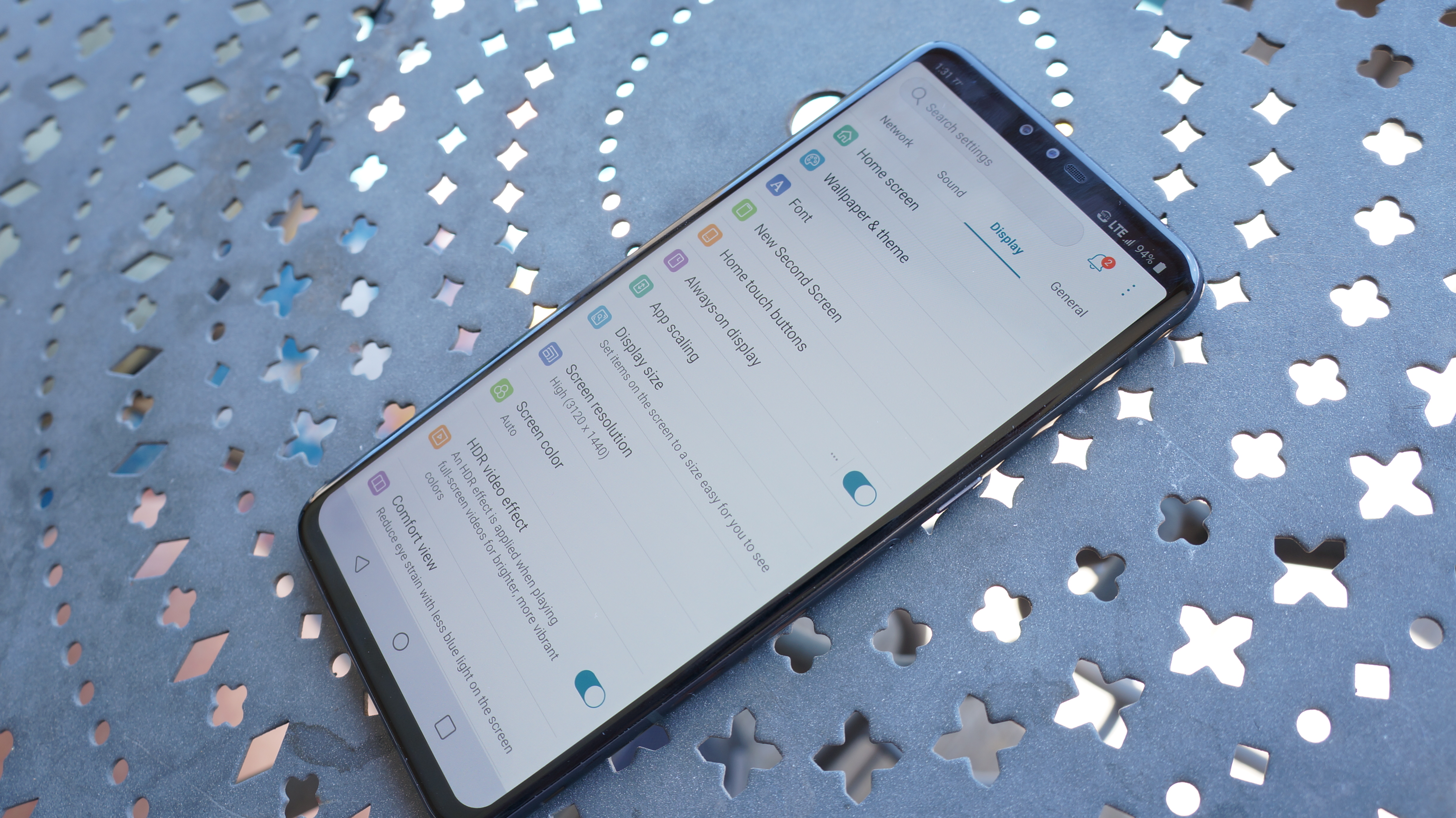
Software
- Android 9.0 Pie
- LG UX 8.0 could be better tweaked for usability
LG’s take on Android isn’t our favorite. It’s not excessive by any means, but it’s also not as simplified or logical as it could be.
By default, the LG V50 just has a home screen with all installed apps appearing on it. There’s no hiding them in an App Drawer if you don’t use them regularly. We had to dig into settings to enable the Home Screen + App Drawer configuration. Even then, the App Drawer wouldn’t stay organized, as new apps would go to the last page even with the sorting set to alphabetical.
The software does have some handy features. A double tap of the Volume Up button while the screen is off will open a note taking screen. The same process with Volume Down quickly launched the camera. And, there’s a quick shortcut for taking a screenshot with annotations right in the notification panel.
But, for the logical considerations LG made with the software, it also missed a few. It feels like a no-brainer for any phone with an OLED display to have a built-in dark theme, but here the LG V50 manages not to put its AI to work, with no dark theme in sight. The Wallpaper & theme store doesn’t offer an easy way to find a third-party one either.
The long aspect ratio of the large screen also makes reaching the top of the screen difficult, but that’s the only way to pull down the notification shade. That makes it a true struggle to do one-handed. And the page that comes up when swiping down from the middle isn’t all that useful.
Almost worst of all is the buried mobile hotspot settings. There’s no way to add mobile hotspot to the notification panel’s quick settings. Instead, we have to go into the settings menu and turn it on every time we want to use it. And, with this being a 5G device, that can be fairly often.
Who’s it for?
You’re an audiophile
The inclusion of a headphone jack and the Quad DAC lets LG V50 excel when it comes to audio performance, and the surround sound available just gives it that much more to offer.
You can’t wait for 5G but want some savings
The LG V50 can get you connected to 5G, and it doesn’t require any cumbersome mod like the Moto Z4. And, while it’s still expensive, it is slightly cheaper than Samsung’s 5G offering.
You don’t like Samsung
If you really want the best 5G phone, but you aren’t a big fan of Samsung for whatever reason (maybe you never forgave it for the old bloatware), then the LG V50 is the next best option in many markets.
Who’s it not for?
You want the best
The LG V50 has a lot going on, but it lags behind its competitors in too many ways. There are better cameras, slicker designs, cheaper options and higher performance phones all available.
You want your money’s worth
Because the LG V50 comes at a high price while just lacking in a lot of areas, we don’t feel like it is offering all that it could be. A more modern design would have gone a long way to making its price feel justified.
You want a futuristic phone
5G might seem like the future, but the LG V50 is just an iteration of the LG V40 in a lot of ways. There’s no futuristic screen, no wild pop-up camera, no reverse wireless charging and no in-screen fingerprint scanner. Considering many of those things were already available in 2018, the lack of any of them just hurts in 2019.
- Take a look at our LG discount codes for the best LG offers and savings.
Competition
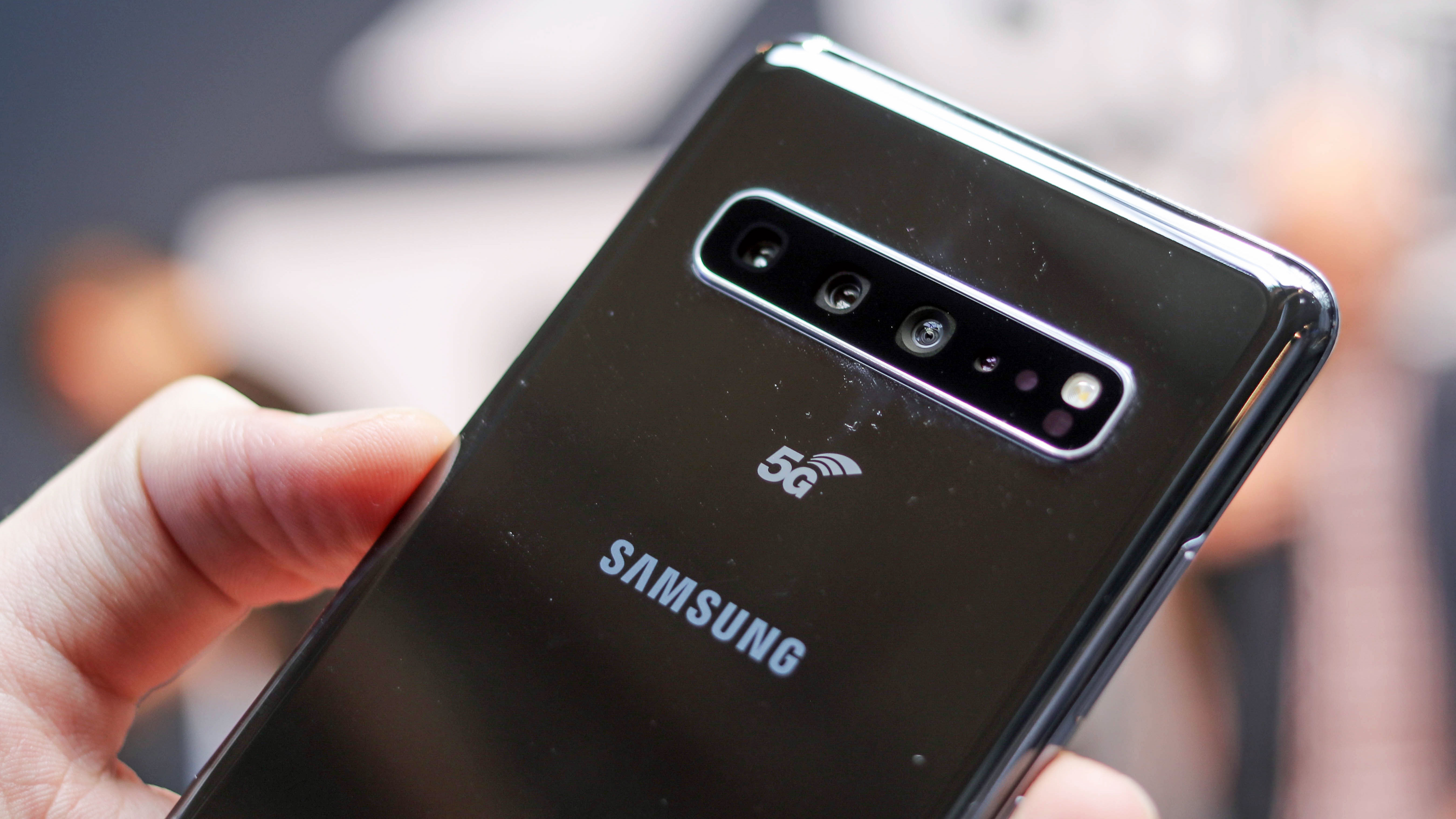
Galaxy S10 5G
The Galaxy S10 5G is a premium experience. It goes all in with a bigger screen, more cameras, and all the performance you could want. It has the Infinity-O display that Samsung introduced this generation, and while it costs more than the LG V50, it’s offering more to justify that.
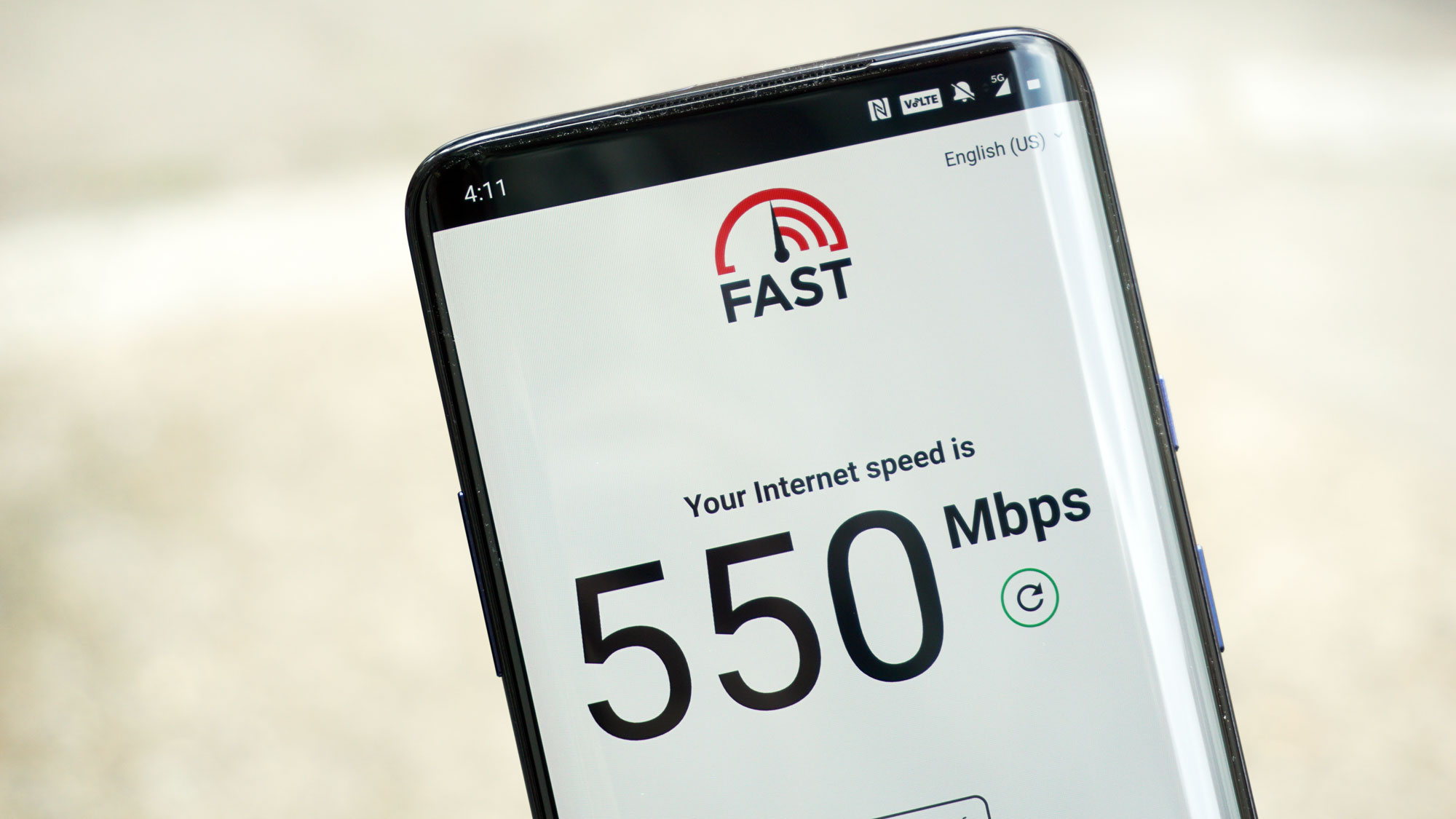
OnePlus 7 Pro 5G
The OnePlus 7 Pro 5G is its fiercest challenger with affordable pricing but limited availability. Until OnePlus brings it to more markets, the LG V50 will get to be the affordable 5G flagship experience for many people.
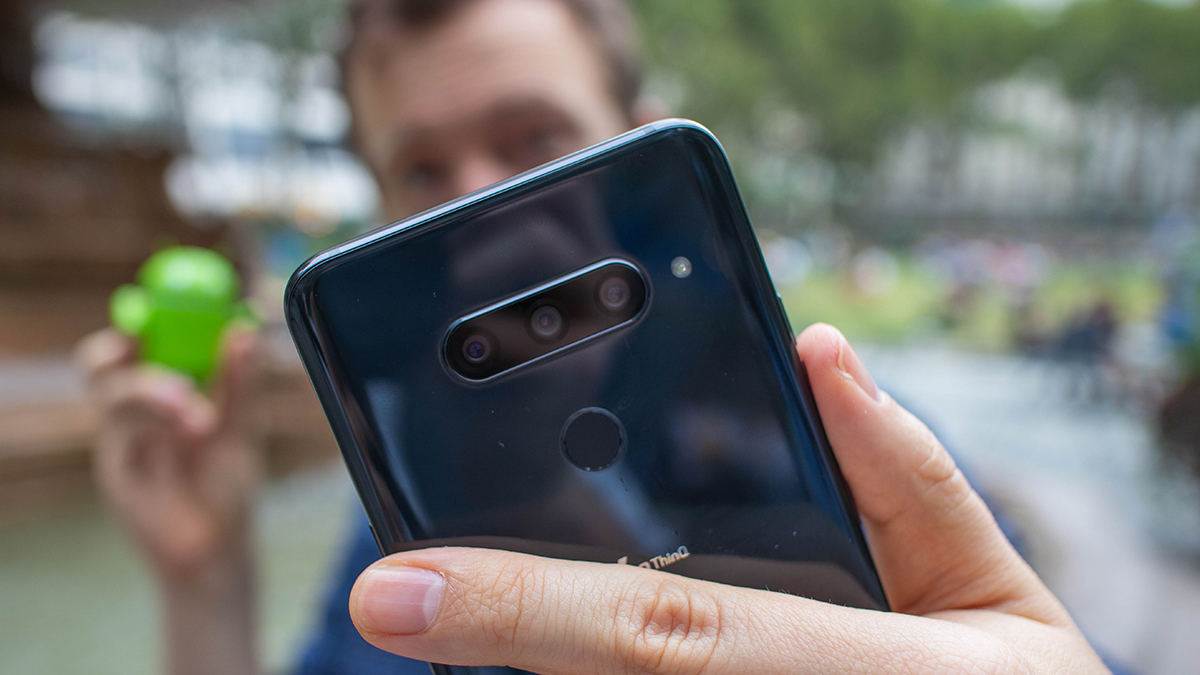
LG V40
The truth is that many things have stayed the same from the LG V40 to the LG V50. Sure, it’s gotten an improved chipset and 5G, but unless you’re sure to need those, the LG V40 offers an almost indistinguishable day-to-day experience. Plus, it comes at a lower price.
Over the last several years, Mark has been tasked as a writer, an editor, and a manager, interacting with published content from all angles. He is intimately familiar with the editorial process from the inception of an article idea, through the iterative process, past publishing, and down the road into performance analysis.
